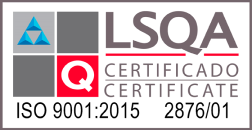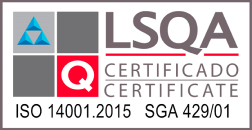With the arrival of autumn, several Chilean cities are affected by an increase in the concentration of air pollutants, which can represent a risk to public health. In this context, the Critical Episode Management System (GEC) is implemented each autumn-winter to address these atmospheric pollution events.
During the GEC System, an operational plan is activated aimed at facing critical episodes of atmospheric pollution, especially those caused by respirable particulate matter, such as PM10 or PM2.5, which can exceed safe levels for health. This plan is coordinated by the Regional Ministerial Secretariat (SEREMI) of the Environment of each affected or saturated region.
What is meant by “saturated zone”?
A saturated zone refers to a geographical area where levels of atmospheric pollution exceed the limits established by Chilean environmental quality standards. In these zones, levels of respirable particulate matter exceed safe values for human health.
Components of the GEC System Operational Plan:
- 1. Air quality monitoring: Continuous monitoring of the concentration of pollutants in the air is carried out, especially respirable particulate matter (PM10 and/or PM2.5), to identify and respond to critical pollution episodes.
- 2. Air quality forecasting: Models and forecasting tools are used to predict the evolution of atmospheric pollution and anticipate possible critical episodes, allowing for preventive measures to be taken.
- 3. Communication with the citizenry: A communication plan is implemented aimed at informing the population about air quality, health risks, and preventive measures they can take to protect themselves.
- 4. Procedures for declaring critical episodes: Clear protocols are established to officially declare critical pollution episodes and activate the corresponding prevention and mitigation measures.
- 5. Prevention and mitigation measures: Concrete actions are implemented to reduce pollutant emissions and protect public health during the period of critical episode management.
Implementation Date of the GEC System and Applicable Regions
The implementation period of the GEC System spans from April 1st to September 30th, inclusive, with exceptions for the Metropolitan and O’Higgins regions, where the period extends from May 1st to August 31st of the current year.
Limitations of Models in the Management of Critical Episodes: Improvements and Contributions
Although the GEC System in Chile deploys a set of measures to address atmospheric pollution, the effectiveness of these actions largely depends on the precision of the models used to predict and manage critical episodes. However, various studies and evaluations have identified certain limitations in these models, leading to the need for improvement and optimization of their performance.
The report prepared by PARTICULAS SpA during 2023 highlights some of these limitations and proposes solutions to optimize the critical episode management system in the Metropolitan Region of Chile. Among the most relevant findings are: Among the most relevant findings are:
- 1. Identification of Critical Zones: The analysis reveals that certain monitoring stations, such as those located in Pudahuel and Cerro Navia, are especially prone to concentrate high levels of respirable particulate matter (PM10 and PM2.5). These lower areas of the city are mainly affected by anthropogenic activities, such as wood burning in homes and vehicle emissions.
- 2. Climatic and Temporal Factors: A clear correlation between critical pollution episodes and climatic factors such as low temperatures and reduced atmospheric ventilation during winter is observed. Forecasting models must take into account these variables to more accurately predict the occurrence of critical episodes.
- 3. Evaluation of Forecasting Models: The study evaluates the performance of different air quality forecasting models, such as Cassmassi 1 for PM10 and WRF for PM2.5, over a three-year period. Trends of overestimation and underestimation in the prediction of critical episodes are identified, as well as the need to incorporate additional variables to improve the accuracy of forecasts.
Given these limitations, it is crucial to implement improvements in forecasting and critical episode management models, using advanced data analysis tools and technologies such as artificial intelligence. In this sense, the MIMAire® platform, developed by PARTICULAS SpA and ULEARN SpA, represents a significant advance by allowing the generation of air quality alerts based on more accurate and updated forecasts. This platform uses artificial intelligence techniques to analyze data in real time and provide relevant information for decision-making in environmental management.
We invite you to check out our INTELLIGENT air quality and meteorology forecasting service, and request a DEMO for your company.











